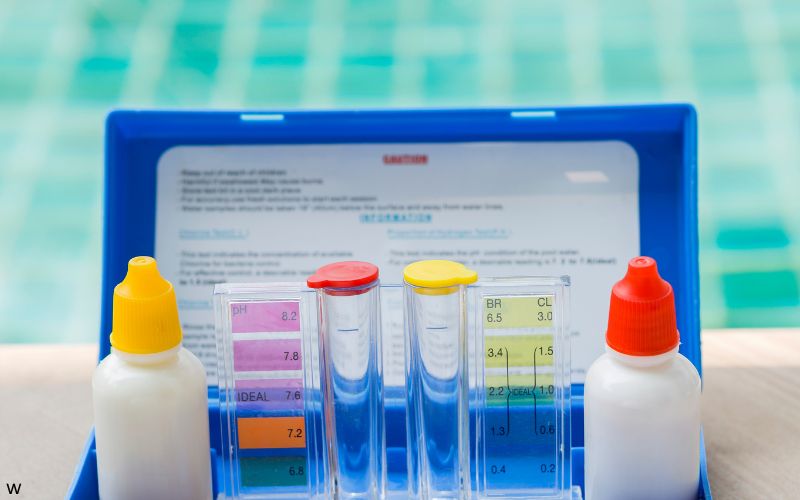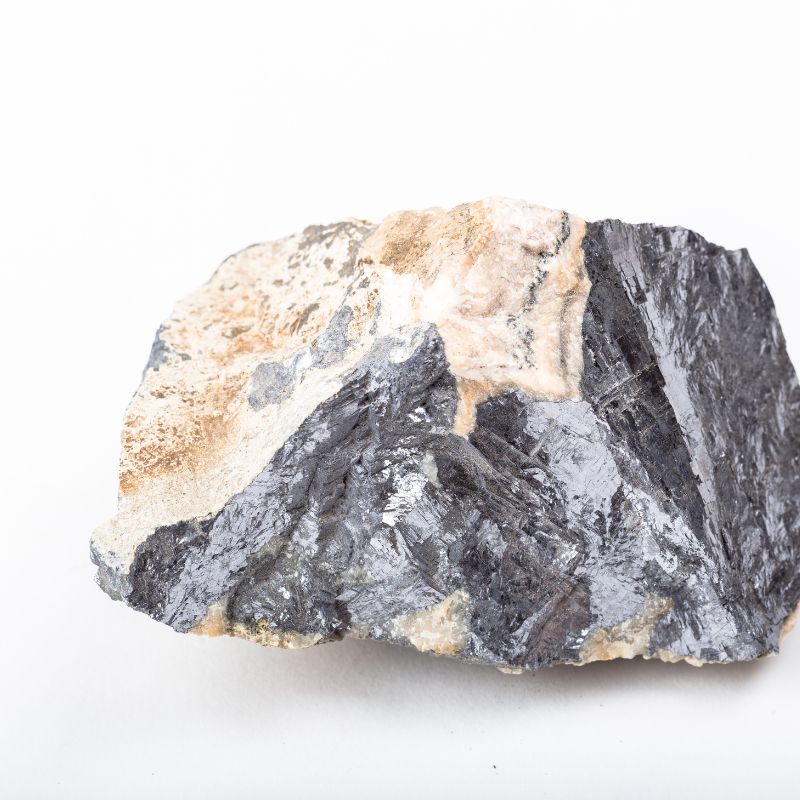Overland Park Water Quality at a Glance
multiple cancer-causing chemicals
Is Overland Park Water Safe to Drink?
Legally Compliant, But Contains Concerning Contaminants – Overland Park water meets federal standards but contains multiple cancer-causing chemicals and 20+ contaminants, 7 exceeding health guidelines. Key concerns include arsenic at 69x above health guidelines, cancer-causing chromium-6 at 92x health guidelines, and treatment byproducts like haloacetic acids at 99-221x health guidelines. The water sources come from the Kansas and Missouri Rivers and undergo standard treatment processes.
⚠️ Key Concerns for Overland Park Residents
- Cancer-Causing Chemicals: Arsenic at 69x health guidelines; hexavalent chromium at 92x guidelines; both linked to increased cancer risk
- Treatment Byproducts: HAA5 at 99x and HAA9 at 221x health guidelines; total trihalomethanes at 111x guidelines – all cancer-causing
- Agricultural Contamination: Nitrates from fertilizer runoff at 6.9x health guidelines; atrazine herbicide detected
- Industrial Pollutants: Bromate at 32x health guidelines from water treatment; multiple metals including barium and vanadium
Read the full report below for detailed analysis, city-specific data, and actionable recommendations for Overland Park residents.
Overland Park – Kansas – Water Quality Report 2025: PFAS Testing, Infrastructure Concerns & Safety across your city
WaterOne provides comprehensive water services to approximately 425,000 residents across Johnson County, including Overland Park, Kansas’ second-largest city. As an independent public water utility serving the region since 1957, WaterOne manages roughly 2,800 miles of water distribution lines, multiple treatment facilities, and advanced pumping stations that deliver an average of 120 million gallons of drinking water daily to the greater Kansas City metropolitan area.
WaterOne sources its drinking water primarily from the Kansas and Missouri Rivers, utilizing both surface water intakes and horizontal collector wells for enhanced supply security. The utility operates multiple treatment facilities including the state-of-the-art Wolcott Treatment Plant and the Kansas River Water Treatment Plant. While WaterOne’s water meets all federal and state quality standards, independent testing reveals concerning levels of multiple contaminants including cancer-causing chemicals that exceed health guidelines. With Johnson County’s continued growth, WaterOne faces ongoing challenges with infrastructure modernization, water conservation, and emerging contaminants while working to address water quality concerns affecting residents.

WaterOne Quality: Current Status (2024-2025)
Latest Testing Results
- Comprehensive Monitoring: WaterOne conducts over 120,000 water quality tests annually from approximately 18,000 samples collected throughout the distribution system, ensuring rigorous monitoring for more than 100 regulated and unregulated contaminants.
- Regulatory Compliance: WaterOne’s water meets all federal and state drinking water standards; however, independent testing reveals 7 contaminants exceeding health guidelines, including cancer-causing chemicals like arsenic (69x above guidelines) and hexavalent chromium (92x above guidelines).
- Cancer-Causing Chemicals: Multiple treatment byproducts detected including haloacetic acids at 99-221x health guidelines and total trihalomethanes at 111x guidelines, all linked to increased cancer risk with long-term exposure.
Water Sources
- Kansas River: Primary surface water source providing approximately 60% of supply, with water drawn from the Kansas River and adjacent collector wells for natural filtration benefits.
- Missouri River: Secondary surface water source contributing approximately 20% of supply through horizontal collector wells located 16 miles away, ensuring supply security and redundancy.
- Federal Reservoir Partnership: WaterOne participates in the Kansas River Water Assurance District, providing access to stored water from Milford, Tuttle Creek, and Perry Lake reservoirs during drought conditions.
Advanced Treatment Technology
- Wolcott Treatment Plant: State-of-the-art facility utilizing advanced membrane technology with recent upgrades including replacement of membrane modules, ensuring exceptional water quality and treatment efficiency.
- Kansas River Plant: Multi-barrier treatment approach incorporating coagulation, flocculation, sedimentation, filtration, and disinfection processes to remove contaminants; however, treatment byproducts from chlorination create concerning levels of cancer-causing chemicals.
- Corrosion Control: Advanced treatment protocols including pH optimization and corrosion inhibitors to prevent leaching of lead and copper from plumbing systems, maintaining water quality throughout distribution.
Infrastructure Modernization
- Distribution Network: Ongoing maintenance and replacement of approximately 2,800 miles of water mains, with strategic upgrades to aging infrastructure throughout Johnson County to maintain system reliability.
- Smart Monitoring Systems: Implementation of advanced real-time monitoring technologies throughout the distribution network to optimize water quality management and detect issues before they affect customers.
- Emergency Preparedness: Comprehensive emergency response protocols and redundant systems ensuring continued water service during infrastructure maintenance, weather events, or other operational challenges.
Customer Protection Initiatives
WaterOne provides extensive customer support through 24/7 emergency service, water quality testing assistance, and educational outreach programs. The utility offers high usage alerts to help customers avoid unexpected bills and participates in NotifyJoCo to keep residents informed about planned outages and emergencies. Given the presence of multiple contaminants exceeding health guidelines, residents may want to consider independent water testing and NSF-certified filtration systems. WaterOne’s investments in cutting-edge treatment technology and emerging contaminant monitoring demonstrate ongoing efforts to address water quality challenges including population growth, agricultural runoff impacts, and treatment byproduct formation.
Recommendations for Overland Park Residents

Test Your Water
Given the presence of contaminants exceeding health guidelines, consider independent water testing through certified laboratories. Contact WaterOne Customer Service at 913-895-1800 for water quality testing assistance or concerns, but supplement with third-party testing for comprehensive analysis.

Conserve Water
Sign up for WaterOne’s high usage alerts at waterone.org to monitor your consumption and avoid unexpected bills. Practice water conservation through efficient irrigation, leak detection, and responsible water use during peak demand periods.

Consider Home Filtration
Given the presence of cancer-causing chemicals and contaminants exceeding health guidelines, NSF-certified filtration systems are strongly recommended. Look for systems certified to remove arsenic, chromium-6, haloacetic acids, and trihalomethanes for comprehensive protection.

Stay Informed with NotifyJoCo
Sign up for NotifyJoCo at notifyjoco.org to receive alerts about planned water outages, emergency repairs, and important updates affecting your neighborhood. This free service helps you stay prepared for any water service interruptions.

Report Issues
Contact WaterOne Customer Service at 913-895-1800 (available 24/7) for water main breaks, pressure problems, or quality concerns. Quick reporting helps maintain system integrity and ensures rapid response to issues.
Frequently Asked Questions
Is WaterOne’s tap water safe to drink?
WaterOne’s tap water meets all federal and state drinking water standards. However, independent testing reveals concerning levels of multiple contaminants including cancer-causing chemicals that exceed health guidelines. The utility sources water from the Kansas and Missouri Rivers, which undergo comprehensive multi-barrier treatment processes including advanced membrane technology.
While WaterOne conducts over 120,000 water quality tests annually from approximately 18,000 samples, independent analysis shows 7 contaminants exceeding health guidelines, including arsenic at 69x above safe levels and cancer-causing treatment byproducts. Residents may want to consider additional filtration for enhanced protection, particularly for vulnerable populations including pregnant women and children.
Why does my water sometimes taste or smell different?
Seasonal taste and odor changes can occur due to natural factors:
1. Seasonal cycling: Warmer weather and rainfall can cause “turnover” in source waters, bringing up naturally occurring organic compounds from river sediments
2. Algae blooms: Natural seasonal algae growth in source waters can temporarily affect taste and odor, though water remains safe
3. Temperature variations: Spring and fall temperature changes can cause natural variations in source water quality
WaterOne monitors these seasonal variations and confirms water safety during any taste or odor events. If concerns persist, contact WaterOne Customer Service at 913-895-1800 for assistance.
Does WaterOne test for PFAS and emerging contaminants?
Yes, WaterOne actively monitors for PFAS and emerging contaminants:
• PFAS detection: Testing has detected PFBA (perfluorobutanoic acid) at low levels (1.06 ppt), though below health guidelines; WaterOne participates in EPA’s Unregulated Contaminant Monitoring Rule
• Proactive testing: The utility conducts testing beyond regulatory requirements to advance the science of water quality and stay ahead of emerging issues
• Regional advantages: WaterOne’s source waters are not in areas heavily impacted by industrial PFAS contamination sources prevalent in other regions
• Treatment capability: Advanced treatment processes provide multiple barriers against contaminants, including emerging substances
WaterOne’s commitment to ongoing vigilance ensures the utility is prepared to address new contaminants as regulatory standards evolve.
What should I do during a water outage or emergency?
WaterOne provides multiple ways to stay informed and get help during outages:
Stay Informed:
• Sign up for NotifyJoCo at notifyjoco.org for free emergency alerts and planned outage notifications
• Visit waterone.org/projects for updates on planned infrastructure work
• Follow @MyWaterOne on social media for real-time updates
Report Issues:
• Call 913-895-1800 (available 24/7) for emergency repairs or water main breaks
• WaterOne crews work around the clock to restore service as quickly and safely as possible
During freezing weather, take precautions to prevent frozen pipes by trickling faucets and protecting outdoor spigots.
Quality News About Your Water
Get the comprehensive water quality news coverage you need with our dedicated US Water News Service. From coast to coast, we deliver in-depth reporting and expert analysis on PFAS contamination, EPA regulatory changes, infrastructure developments, and emerging water safety issues affecting communities nationwide. While mainstream media only covers the biggest stories, we provide the detailed, ongoing coverage that helps you understand the full scope of America’s water challenges. Whether you’re a concerned citizen, water professional, or community leader, our daily updates and analytical insights keep you informed about the issues that matter most to public health and environmental safety.
Contaminants of Concern

Cancer-Causing Chemicals
Source: Arsenic from natural geological deposits and industrial activities; hexavalent chromium from industrial pollution and natural sources; treatment byproducts from chlorination processes
Health Effects: Arsenic linked to skin, bladder, and lung cancer; hexavalent chromium associated with lung cancer; haloacetic acids and trihalomethanes linked to increased cancer risk with long-term exposure
Current Levels: Arsenic at 69x health guidelines (0.275 ppb vs 0.004 ppb guideline); chromium-6 at 92x guidelines; HAA5 at 99x and HAA9 at 221x guidelines Filtration Needed: Reverse osmosis and specialized filters required for effective removal

Agricultural Contamination
Source: Nitrates from fertilizer runoff and agricultural activities; atrazine herbicide from cornfield and agricultural applications throughout Kansas and Missouri watersheds
Health Effects: Nitrates can cause oxygen deprivation in infants (blue baby syndrome) and are linked to increased cancer risk; atrazine is a hormone disruptor affecting reproductive systems
Current Levels: Nitrates detected at 6.9x health guidelines (0.960 ppm vs 0.14 ppm guideline); atrazine present at concerning levels above health benchmarks Regional Challenge: Widespread agricultural activities in Kansas and Missouri watersheds contribute to ongoing contamination
Please read – our information
The information presented on cleanairandwater.net is compiled from official water quality reports, trusted news sources, government websites, and public health resources. While we strive for accuracy and thoroughness in our presentations, we are not scientists, engineers, or qualified water quality professionals.
Our mission is to present water quality information in an accessible, real-world format that helps people understand what’s in their water and make informed decisions about their health and safety. We believe that complex environmental information should be available to everyone in a format that’s easy to understand.
We make every effort to ensure our content is current and accurate, but we cannot guarantee that all information is complete or error-free. This website should not replace official communications from your local water utility or health department. We always recommend consulting official sources for the most up-to-date information regarding your specific water system.
Clean Air and Water is not liable for any unintentional errors, omissions, or outdated information. The content on this site is provided for informational purposes only and should not be considered professional advice.


